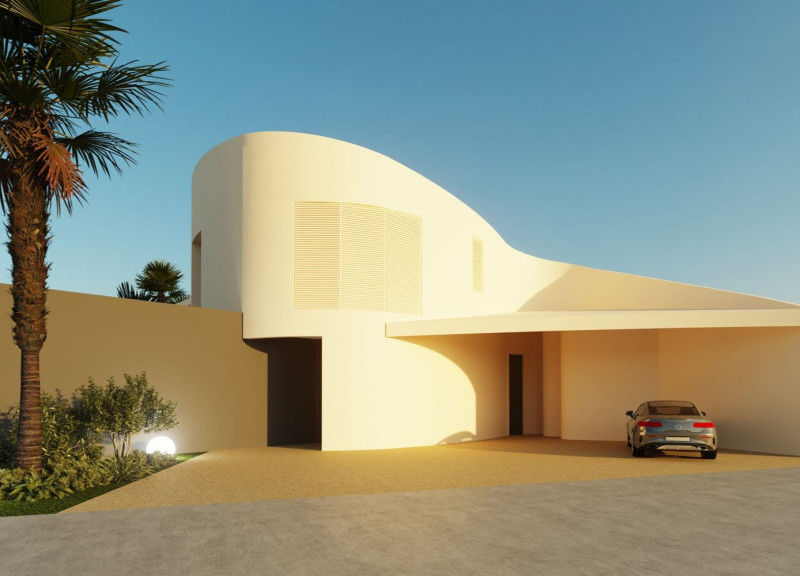5 key facts about this project
The design is grounded in a clear intention, focusing on sustainability, user engagement, and community integration. Its primary function encompasses [explain the primary use, such as residential, commercial, educational, etc.], highlighting the adaptability of the space to various activities while fostering an atmosphere of collaboration and connectivity. The overall layout is meticulously organized, ensuring that each area serves its purpose efficiently while promoting ease of movement and interaction among users.
At the heart of the architectural design is a strong emphasis on materiality. This project utilizes a diverse palette of materials that not only define its aesthetic but also enhance its performance. Key materials include recycled steel, which offers structural integrity with a contemporary finish, and large expanses of glass that promote natural light and transparency, creating inviting spaces. Concrete is a prevalent choice, providing strength and versatility that supports innovative forms, while the inclusion of wood elements introduces warmth and texture, balancing the more industrial components.
The architectural forms throughout the project are characterized by clean lines and a harmonious relationship with the surrounding landscape. Unique features, such as cantilevered sections that extend beyond the base, create visually engaging contrasts and seamlessly integrate interior spaces with the outdoors. Terraces and balconies invite users to connect with nature, reinforcing the notion that architecture should enhance well-being and promote interaction with the environment.
Incorporating sustainable practices, the project demonstrates innovative design approaches such as passive solar orientation and natural ventilation systems. These features contribute to the energy efficiency of the structure and reduce its ecological footprint, aligning with modern architectural ideas centered on environmental responsibility. Additionally, the integration of smart building technologies allows for efficient resource management, providing a forward-thinking model for future developments.
The project also excels in community engagement, as it invites participation from local residents in its design process. This inclusive approach ensures that the architecture serves not only its occupants but also the broader community, creating a sense of belonging and ownership. Flexible spaces are designed to accommodate social gatherings and events, demonstrating a commitment to enhancing community ties through architecture.
The thoughtful interplay of these design elements establishes a compelling narrative that resonates with the audience. By bridging contemporary aesthetics with functional design, the project stands as a testament to the evolving nature of architecture. The careful consideration of context and material choices allows the spaces to endure and adapt over time, addressing both current and future needs.
For those interested in exploring the intricate details of this architectural project, including architectural plans, architectural sections, and innovative architectural designs, the presentation offers valuable insights. Engaging with these elements will deepen one's understanding of the architectural ideas that shaped this project, showcasing the multifaceted nature of modern design.


























